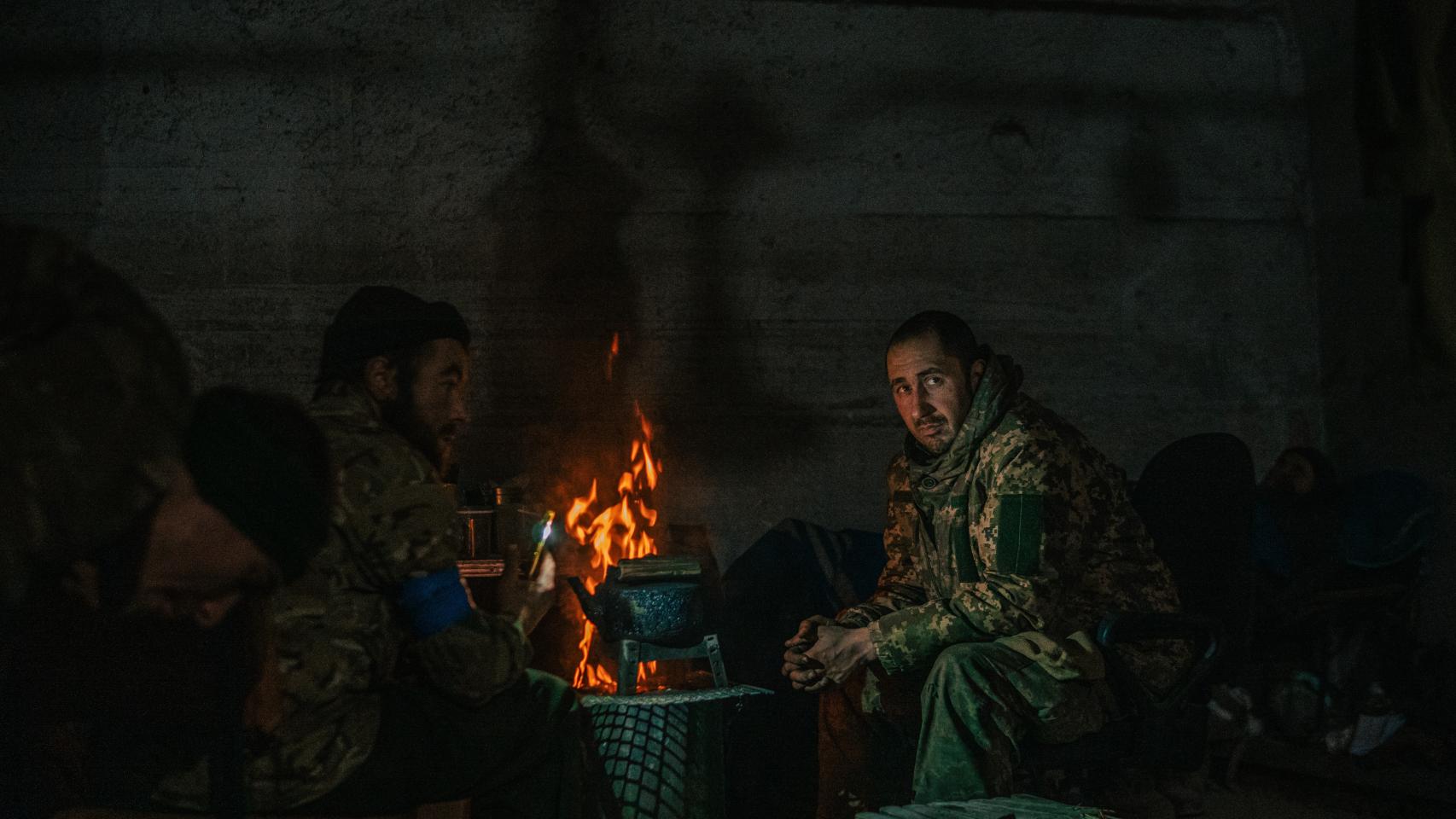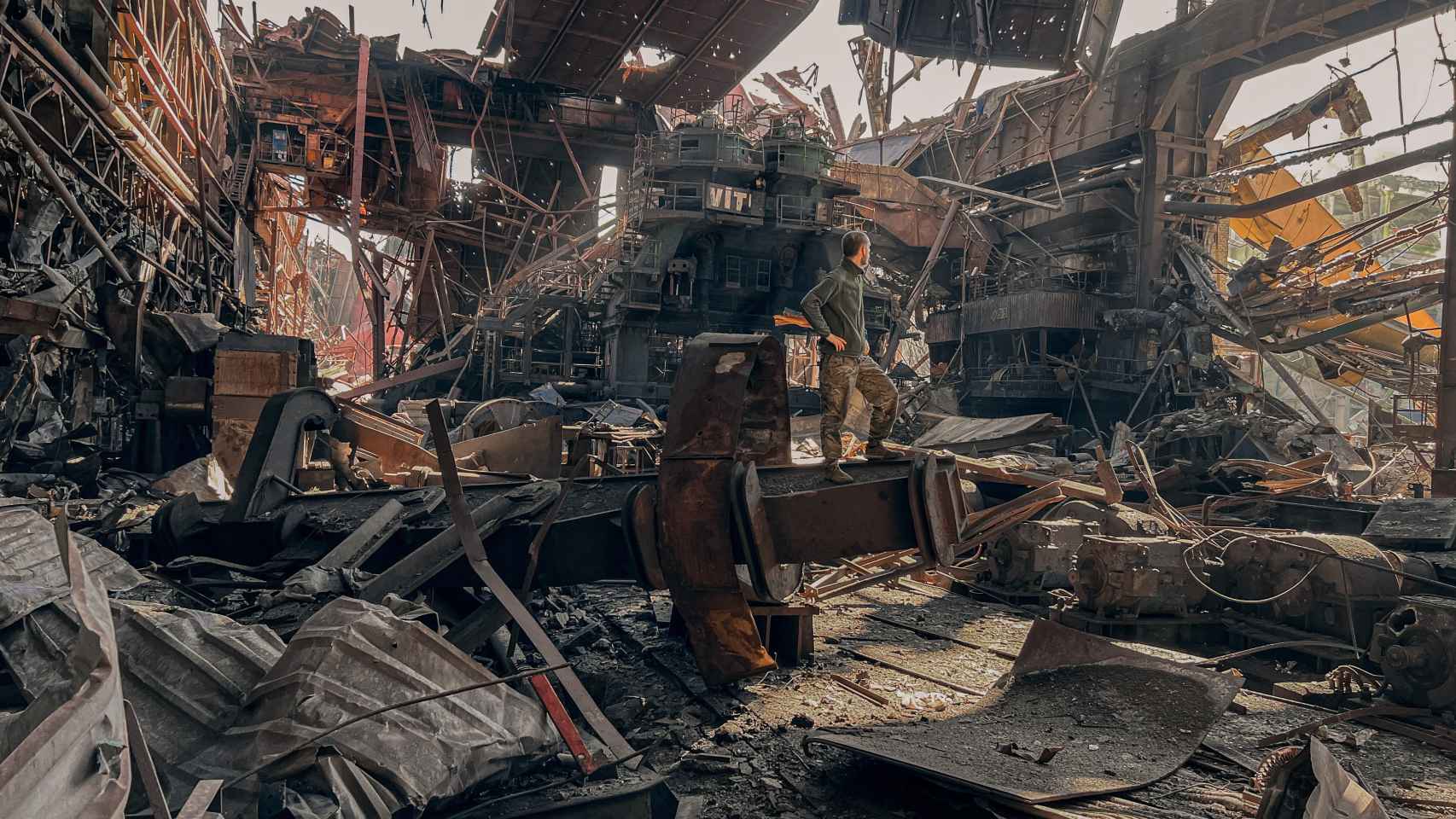From inauguration in 1933, the Azovstal steelworks in Mariupol has only stopped working twice. The first, in 1940, when it was bombed by Nazi troops and thousands of factory employees enlisted in the army to stop the German advance on its way to Moscow. The second, exactly one year ago today: the day Putin decided to invade Ukraine.
On February 24, 2022, the lives of the more than 446,000 inhabitants from this town on the Azov Sea coast was interrupted by a hail of Russian missiles. Entire buildings were destroyed, dozens of people were killed and huge columns of smoke they dyed the sky black in a matter of minutes. When the bombs began to fall, Sergei Kalinichenkomanager of the heavy sheet metal workshop, was at his job in the large factory of iron and steel.
“The shop was running at full speed, at maximum capacity. Everyone was working,” Kalinichenko explains in Museum of Civil Voices, a platform of the Rinat Akhmetov Foundation that collects testimonies from war victims. Suddenly -he continues-, the order came to suspend the production process indefinitely. “We turned off the heaters, shut down the mill, all the converting units, all the sections, and waited for the next instructions,” she details.
A soldier among the ruins of one of Azovstal’s ships.
metinvest.
However, completely shutting down an industrial plant that produces four million tons a year It’s not as easy as turning off the television at home. “It takes a little more than seven days to do it safely,” explains Ivan Goltvenko, director of Human Resources at the steel mill owned by Metinvest, to EL ESPAÑOL.
The coke oven batteries (which transform coal) and blast furnaces (where the fusion of iron ores is carried out) that are used in the steel mills give off toxic and highly flammable gases. Thus, if they were hit by a missile, an explosion would probably occur. “That is why we decided to stop; to avoid a disaster”, justifies Goltvenko, who insists on the importance of reducing the enrichment of raw materials, reducing the temperature of the ovens and guaranteeing the safety of each workshop progressively.
[Los 12 escalones de Putin hacia el infierno: Ucrania, año uno]
To carry out this operation, it not only takes more than a week, but also the work of thousands of people. That is why, in the first days of the war, Metinvest asked the workers to go voluntarily to the factory to dismantle it. Nearly 2,000 people volunteered. Among them was Kalinichenko.
“Until March 6 we went to work“, he assures, and describes how while they carried out the dismantling functions, civilians and metalworkers began to take refuge in the bunkers located in the underground of Azovstal. “Luckily we learned from the experience of 2014,” Kalinichenko consoles himself.

Soldiers inside the Azovstal bunkers.
metinvest
He mistake of 2014
He is referring to the violent clashes that took place eight years ago, when a group of pro-Russian separatists seized the city hall and several police stations. Ukrainian forces managed to drive them out, but the fear of another aggression remained. Especially after the illegal annexation of the Republic of Crimea by Russia that same year.
For months, the steelworkers organized themselves into groups to, together with the police, patrol the streets 24 hours a day until the situation stabilized. And not only that: They also contributed to military defense. To prevent the entry into the territory of the Kremlin troops and a possible artillery attack, the Ukrainian army built 60 kilometers from the city a defensive line. There, the soldiers had the slabs made in Azovstal to protect themselves in the trenches.
[‘Mariúpol Reborn’: 5 pasos y 14.500 millones para revivir la ciudad que Putin ha reducido a escombros]
From 2014 to 2022 Mariupol was not attacked again, but the Ukrainian military, including dozens of of members of the Azov BattalionThey have been at the front all this time. “Our mistake was not to think that the enemy was going to be more aggressive and was going to attack us from the sky, with bombs,” laments Goltvenko.
That miscalculation, however, did not prevent it from being reinforced the network of 40 bunkers built in Azovstal since World War II. According to the manager of the plant, after what happened in 2014, the employees were instructed to evacuate the facilities and distribute themselves in groups in the shelters, with a capacity for 1,000 people each. In addition, food and water supplies were increased for 14 days instead of three (as established by the regulations), and medicines and clothes were included so that people could change.
“There are no tunnels in Azovstal, only separate bunkers”
What nobody could expect was that thousands of civilians and soldiers would be forced to stay underground. during the 86 days that the Russian siege lasted at the beginning of 2022. “Very soon we saw that we would not have enough food or water, so we had to ration it. We collected antiseptics that were in the cooking workshops,” he explains in Museum of Civil Voices Anna Konstantinova, a 35-year-old who lived in one of the Azovstal bunkers with her family until she was evacuated in May. “There were moments when there was no hope left”, he describes.
In this sense, Goltvenko explains that there is no tunnel connecting the shelters. “It was part of the Russian disinformation to show that their troops were advancing through the facilities, but each room is separate“This isolation, he details, together with the fact that there was no electricity, internet or coverage caused even members of the same family to be in adjoining rooms without knowing it and without being able to communicate. And he concludes: “That they could survive three months in these conditions can only be considered as a heroic act”.











